One of my favourite kind of aircraft is small jets. Unfortunately, you don’t see them around in India, and you see a lot more of ATRs and Q400s, given the turboprop aircraft have been around longer and have had a more established market in India. Air India operates ATRs, IndiGo decided to pick up a 50 ATR aircraft for their operations but stopped after inducting 15. Jet Airways has ATR aircraft as well. SpiceJet has backed the Q400 project, and recently decided to pick more of those and make the existing ones denser.
Amongst all of this focus on flying the turboprops, which have a limited range of about 1000 miles of flying, there is a new category of aircraft which is betting that you would want a quieter aircraft, and for a longer trip going forward.
The 100-seater aircraft market has been recently reinvigorated with the launch of the Embraer E2. I met the E2 testbed aircraft at the Singapore Airshow last, and Embraer was in the process of working through the details to get the E2 certified for commercial launch at that point of time. The aircraft in Singapore was painted with the Tiger face, given the significance of the Tiger in the Far East. The aircraft received its certification in 2018, and since then has made five deliveries to two airlines: Widerøe of Norway and Air Astana.
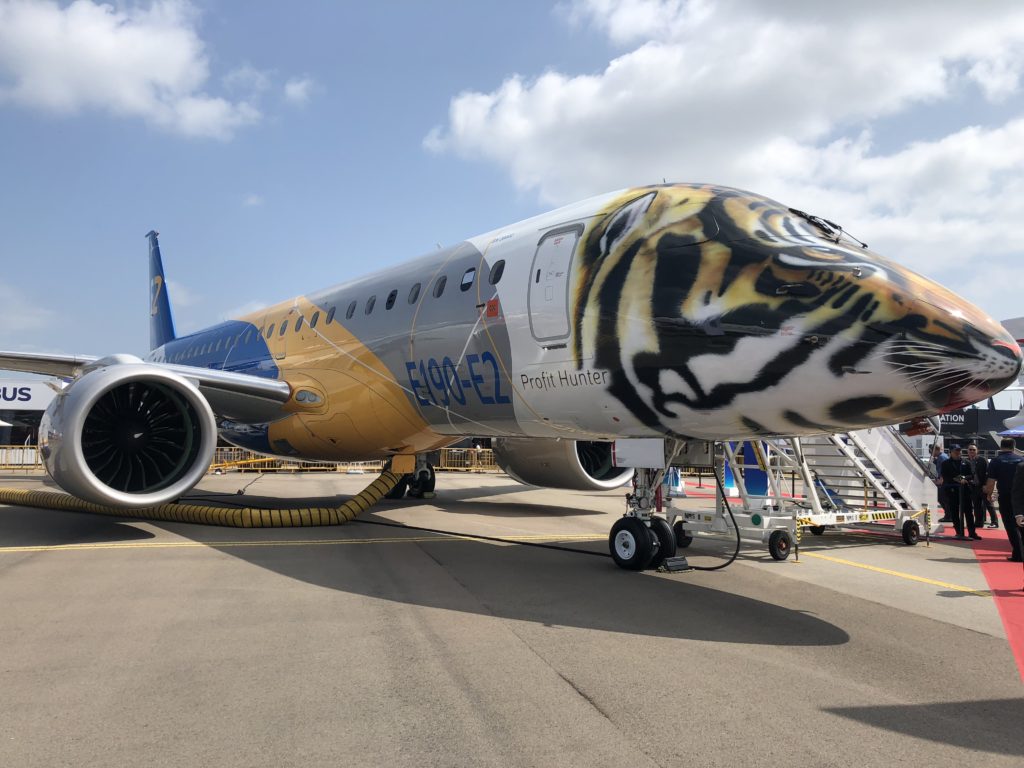
Embraer subsequently also painted one of their other test aircraft with the face of the Shark, as it is one of the hunters, and this aircraft made it to India recently on a demo tour for Embraer.
While I had seen the aircraft before, I had never flown it. Embraer had planned a two-stop demo in India, one at Mumbai and the next morning at Delhi. Since the Delhi stop also included a media flight, I decided to visit the Embraer aircraft in Delhi.
Meeting the Embraer E2 Aircraft
I arrived at the Delhi Airport to meet the Embraer E2, and after verification with the plane’s manifest, I was allowed to enter the airport. Remember, this was not a normal flight schedule. However, we still had to be issued a boarding pass. Here was mine.
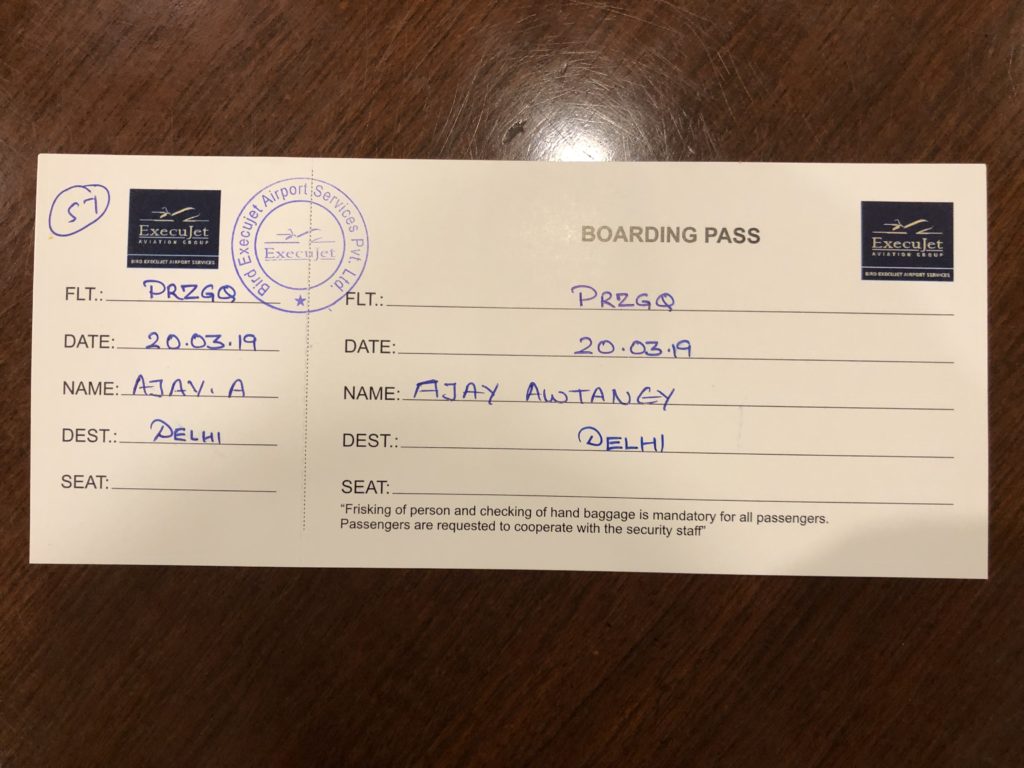
I met Cesar Periera, the Vice President of Sales and Marketing, who was catching a quick coffee before heading to the aircraft. We chatted about the potential of the aircraft in the Indian aviation sector. Cesar explained to me the business case of having the E2 on an operators fleet. Embraer calls the E2 the Profit Hunter. Embraer states that this aircraft will allow airlines to launch routes without compromising on their ticket yields, with a smaller aircraft (100ish seats), and hence the name. As the traffic grows, one could upgauge to a larger aircraft. So, one does not need to start operating with a fleet of 180 seaters from Boeing / Airbus when opening a new station.
In the current aviation market, which seems to prefer the frequency of flights, operating a smaller jet but more flights is sort of what the traveller wants. Regional jets are the lifeline of sorts of all American carriers. For instance, I’ve flown the predecessor of the E2 on the Washington DC – New York and vice versa market a countless number of times, as American Airlines has a sub-fleet of aircraft operating these smaller regional flights for them.
But not just that, the E2 has an excellent range as compared to the turboprops which Indian airlines prefer for regional operations. Not only would these jets fly, let’s say between Mumbai and Jodhpur, but they can also operate flights from Delhi to Singapore non-stop as well with a 100 passengers on board.
Anyhow, I was bussed to the aircraft, and in a short moment, I was face to face with the gorgeous Shark livery.
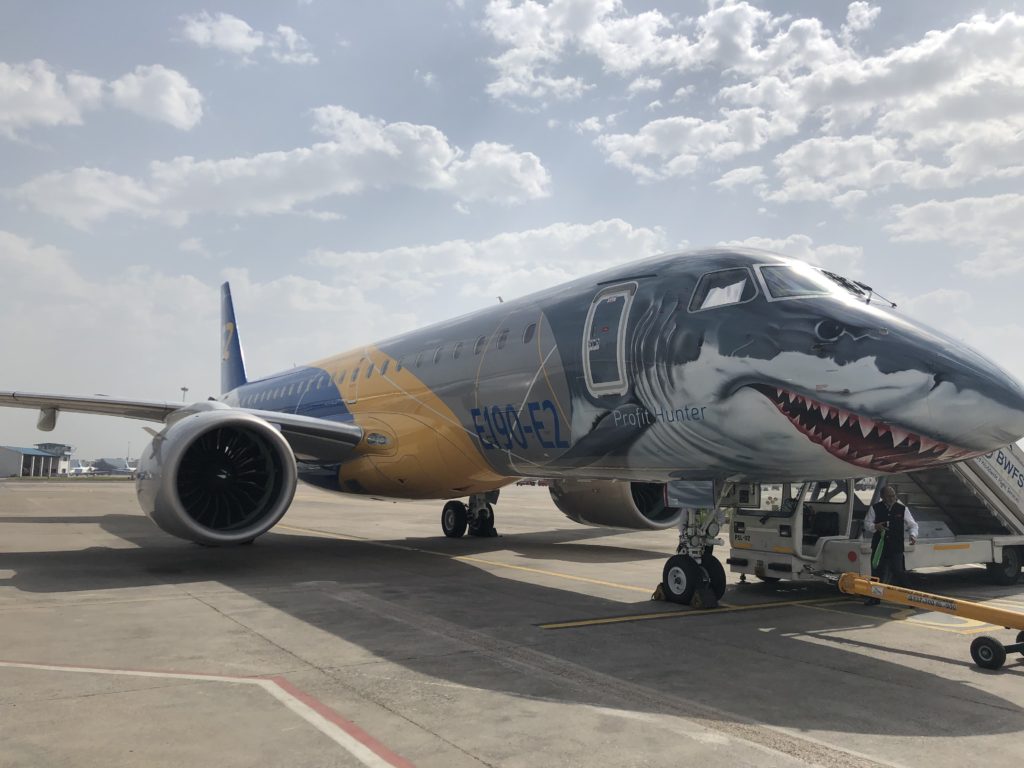
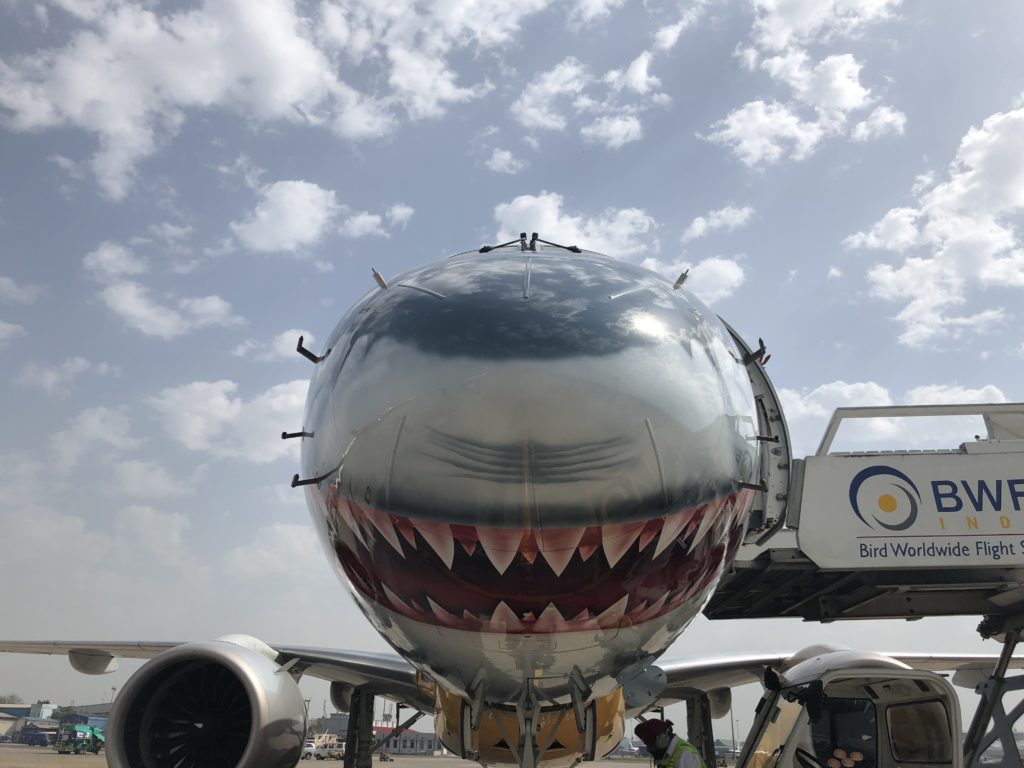

The Embraer E2 Aircraft Passenger Experience
The reason for an airline to consider the E2 from a passenger’s perspective are many. First and foremost, no middle seat on this aircraft. You get a Window seat or an Aisle seat, so no one gets stuck in the middle and is fighting for the armrests.
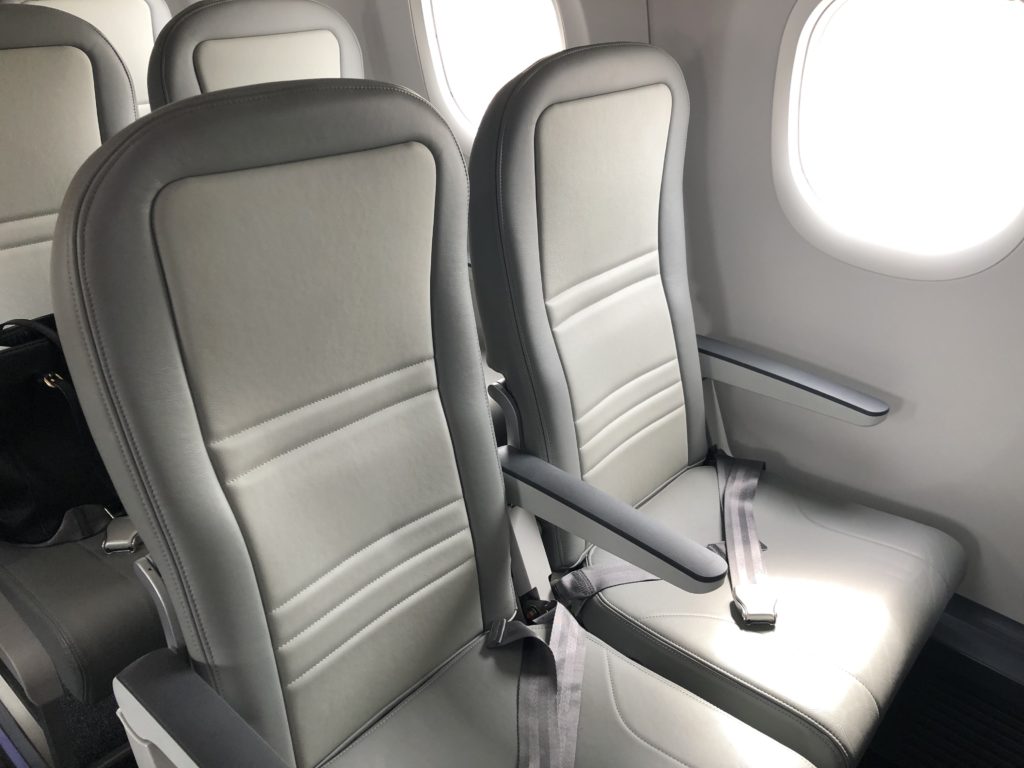
Second, the aircraft comes with some of the biggest windows around there. Bigger windows mean you get the feeling of a more spacious cabin due to more natural light streaming into the cabin. Just have a look.
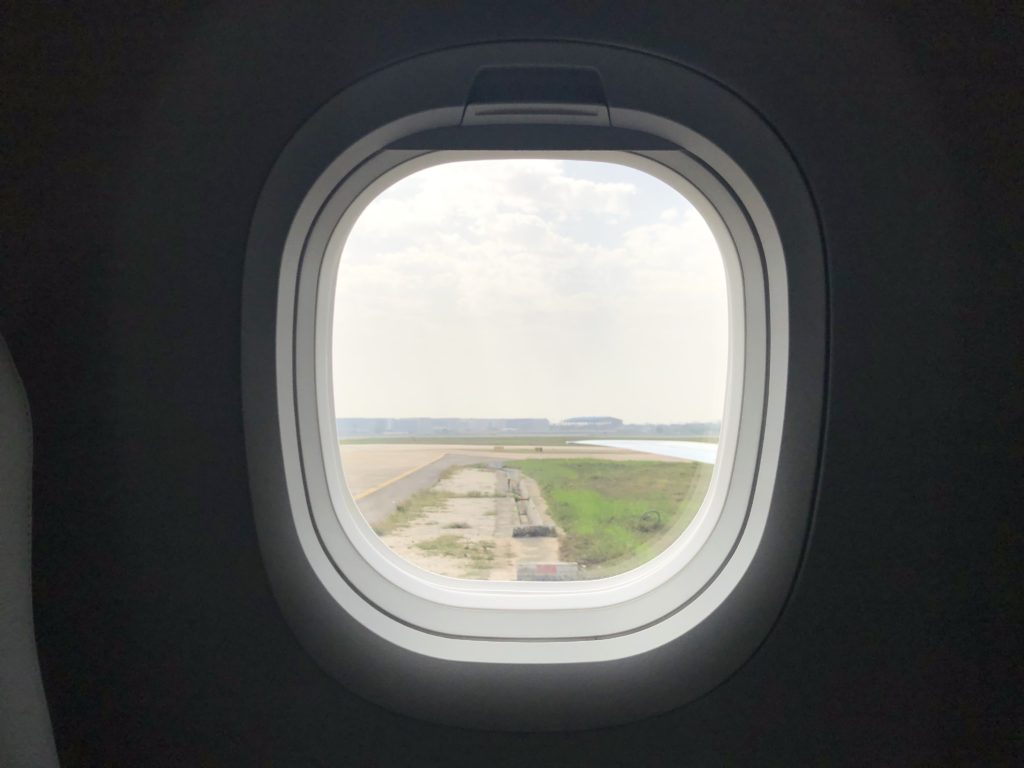
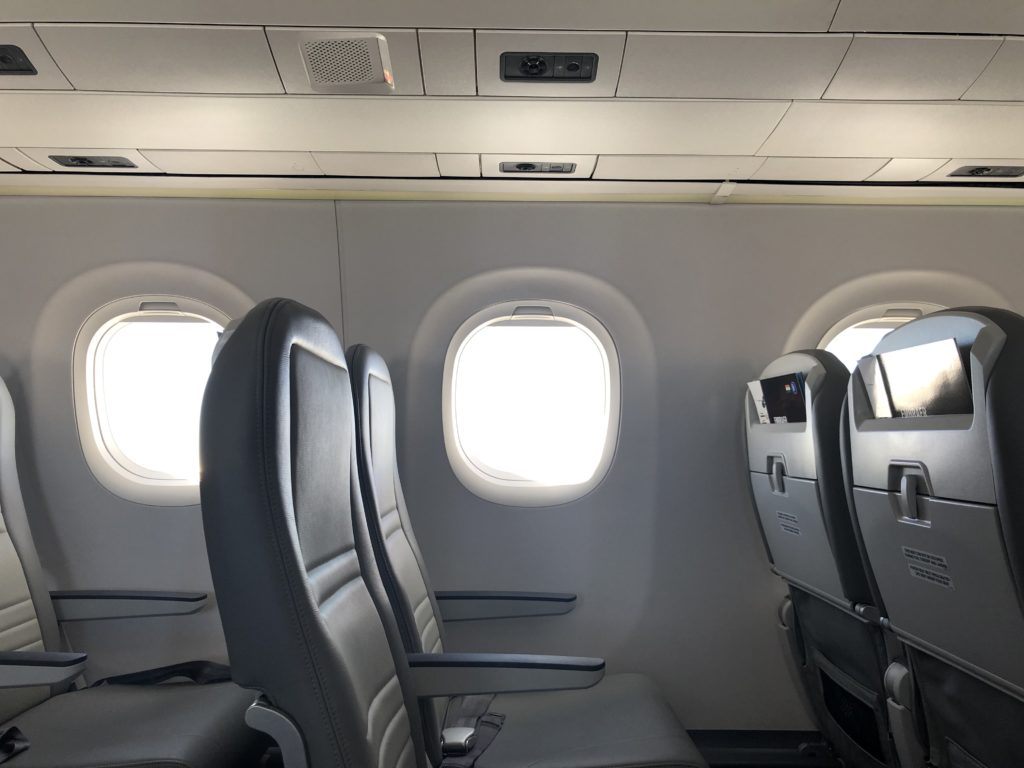
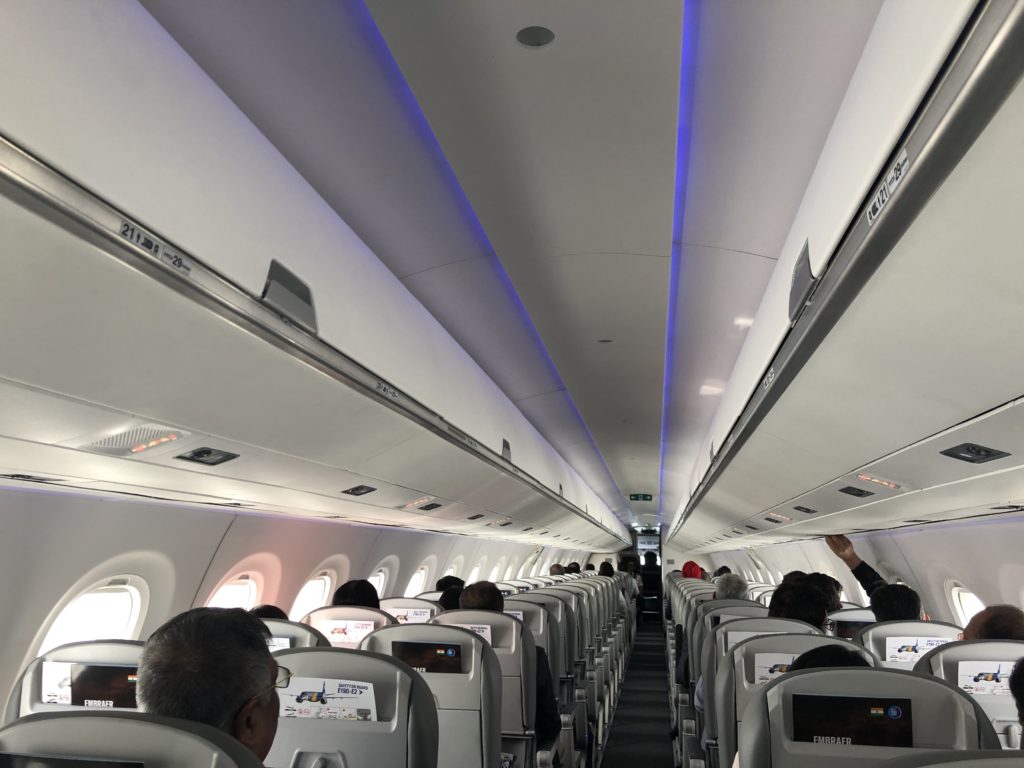
The aircraft also has two power adaptors in every row on the demonstration aircraft. Which means if an airline chooses to install the default package from the airline, you will get a power source to yourself in the aircraft.
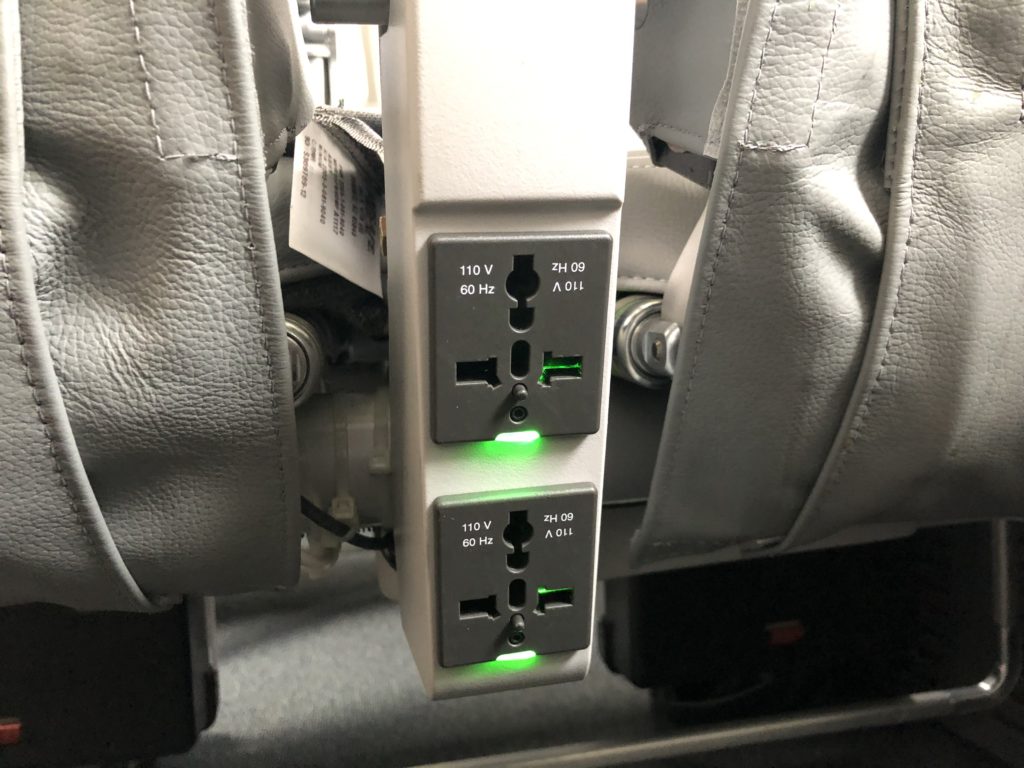
But the best part is the bigger overhead bins. Embraer showed us how the overhead bins were spacious enough for you to get in one big cabin bag per passenger in the overhead bin, which would not need too much work to get inside the cabin as well.
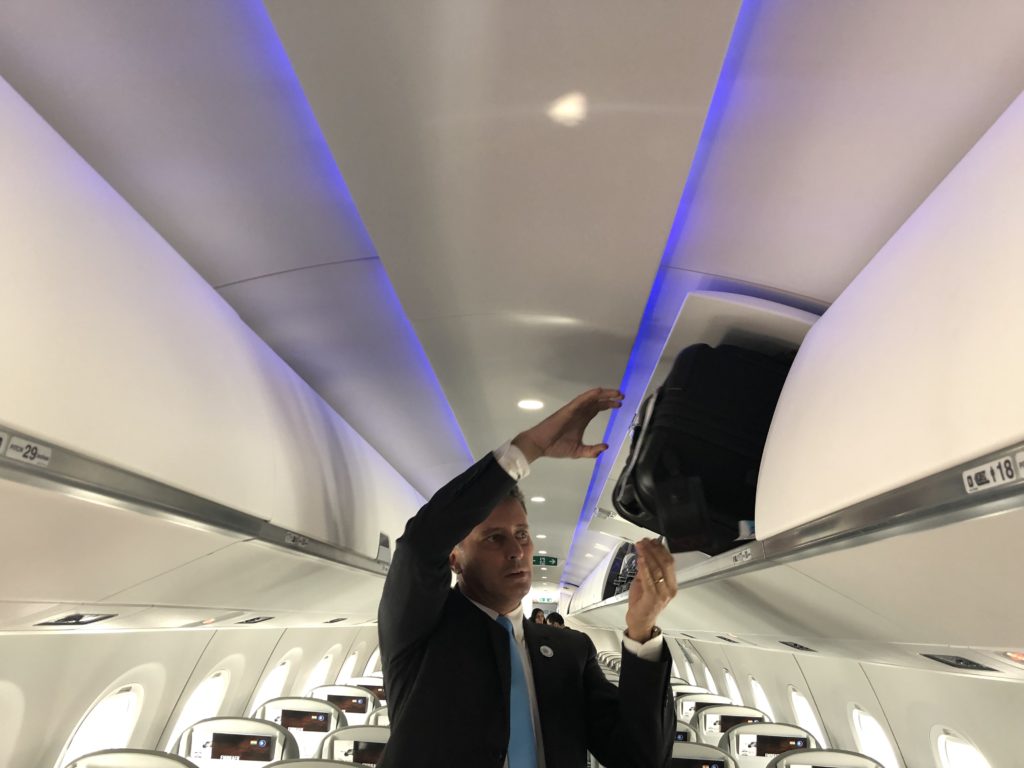
One final feature to note, before we took off, was the flatter lines on this aircraft, which was made possible by a load of redesigning the interior of the aircraft. Also, this means the overhead cabins align with the ceiling rather than hang midway.
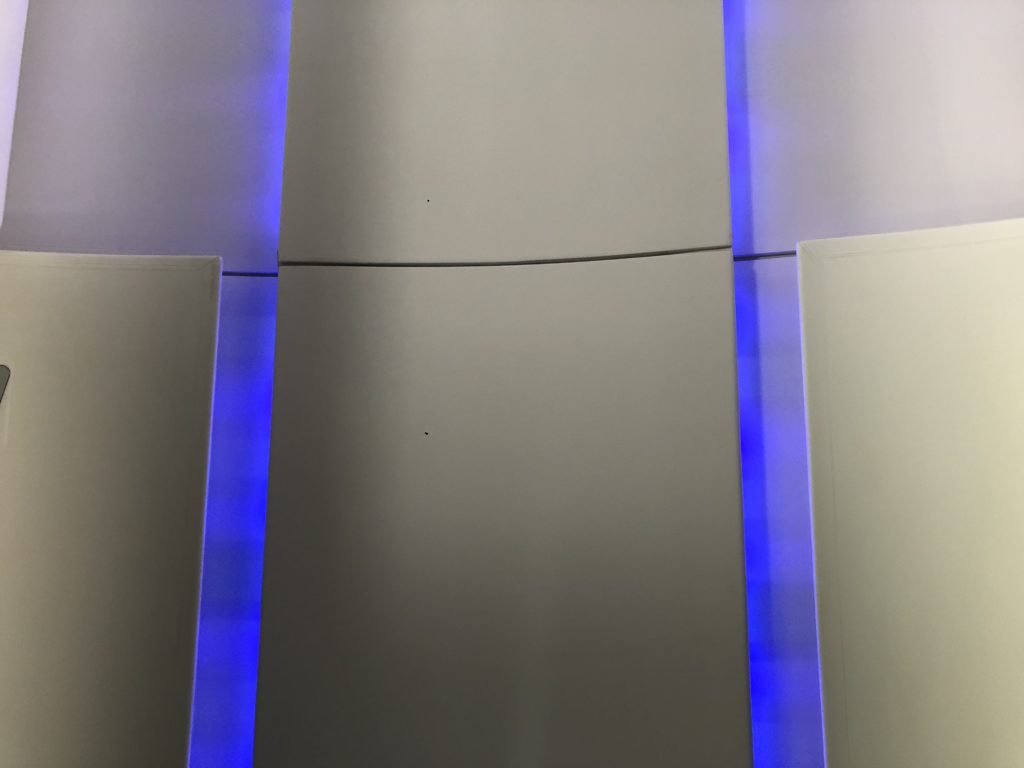
We prepared for take-off, and everyone got to pick a seat of their own. This being a demo aircraft, each row had a different seat pitch. I willingly selected a 30″ seat pitch seat for myself. It worked out perfectly fine for me.
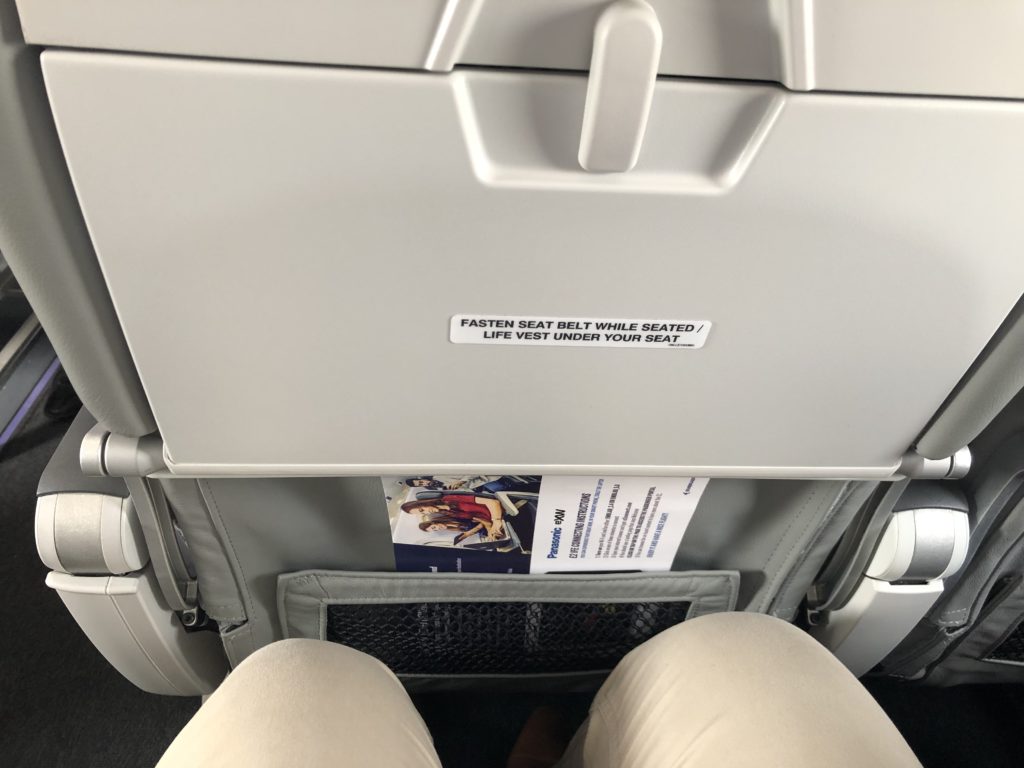
As we taxied on to the runway and began our roll, we took off from the middle of the runway at a very sharp upward angle, something I’d never experienced before in a passenger jet. I don’t have a picture, but to share how much of an incline we were on, here is one from a co-passenger.
View this post on Instagram
After the seatbelt sign came off, I again went about exploring the rest of the plane. One of my first observations was, what a quiet plane this one was. The aircraft is powered exclusively by the Pratt & Whitney PW1000G Geared Turbofan engine, and it is a quiet engine at that for the one hour twenty minutes of this flight.
I headed to the lavatory to check it out. The rear lavatory was very spacious, even for a broad person like me.
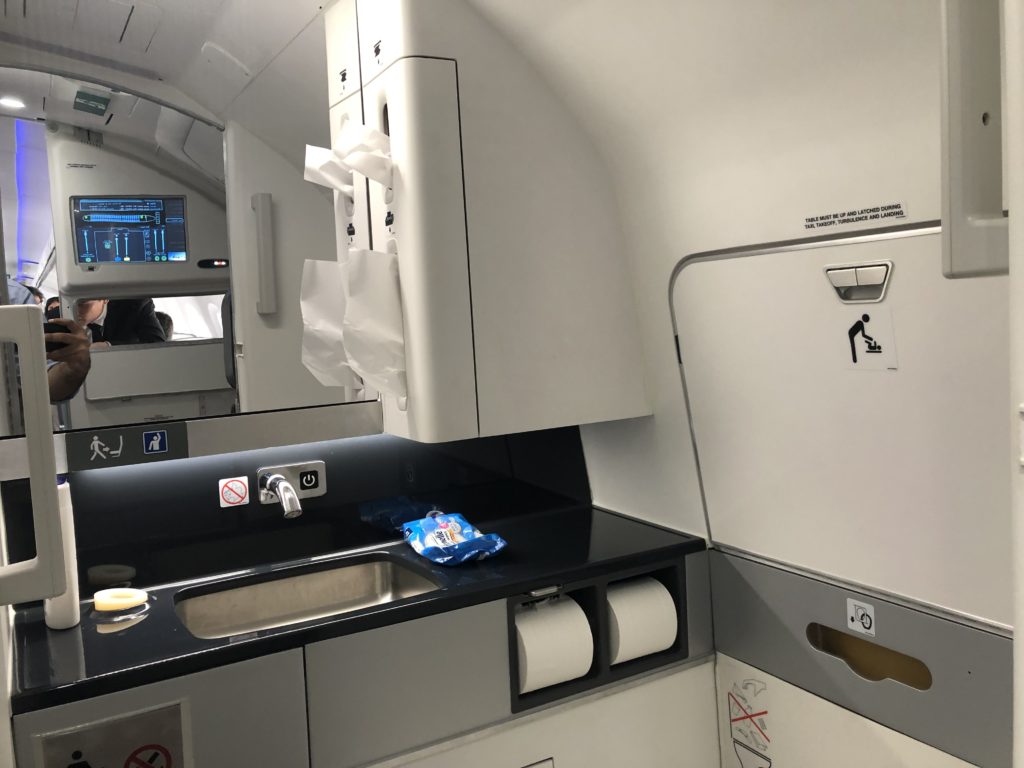
As I headed back to the seat, I couldn’t help but notice the very wide aisle on the aircraft. Earlier in the briefing, I was informed that the aisle and the serving cart were designed in such a way that a passenger could pass through when service would be on. And indeed, I was able to suck in my tummy and squeeze through to the other side.

The Embraer E2 has some of the broadest seats in the business, which made it very comfortable. The 18.25″ seat width is higher than the standard Airbus seat width of 18″ which is higher than the seat width of 17″ which is the standard for Boeing aircraft. Broad me was comfortable in the seats.
I brought out my laptop to check the comfort with the computer open, and it worked out pretty okay for a 13″ laptop.
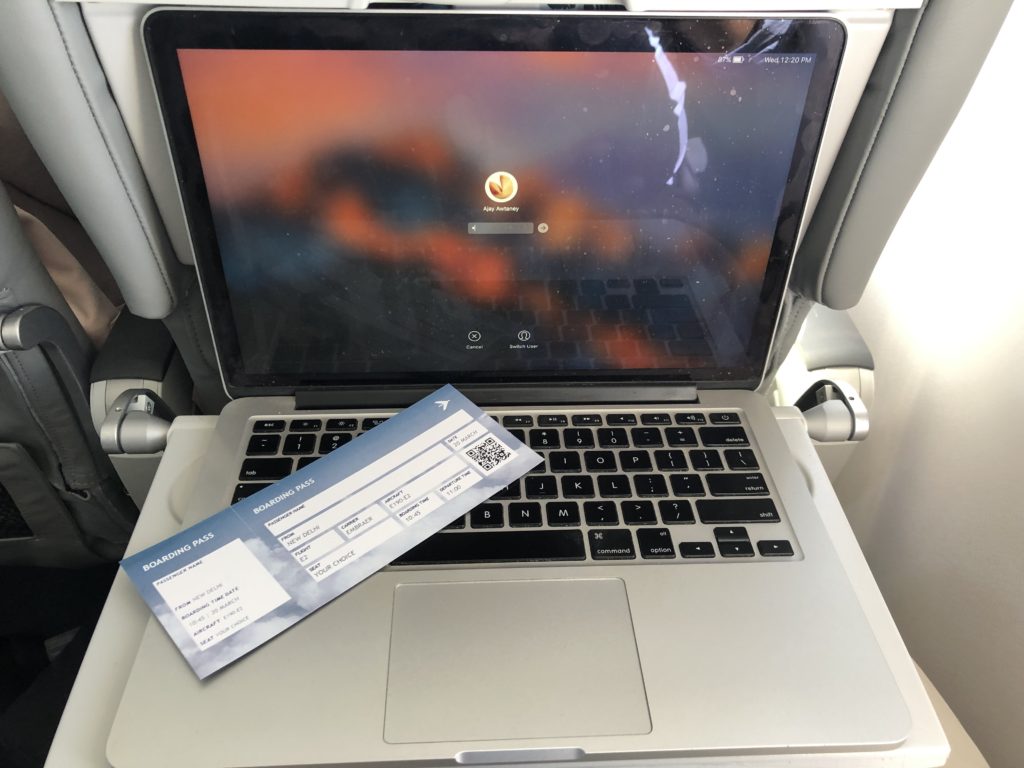
The aircraft is also equipped with wifi capability, which means if someone puts this in actual service, you have a paxex delight in the air.
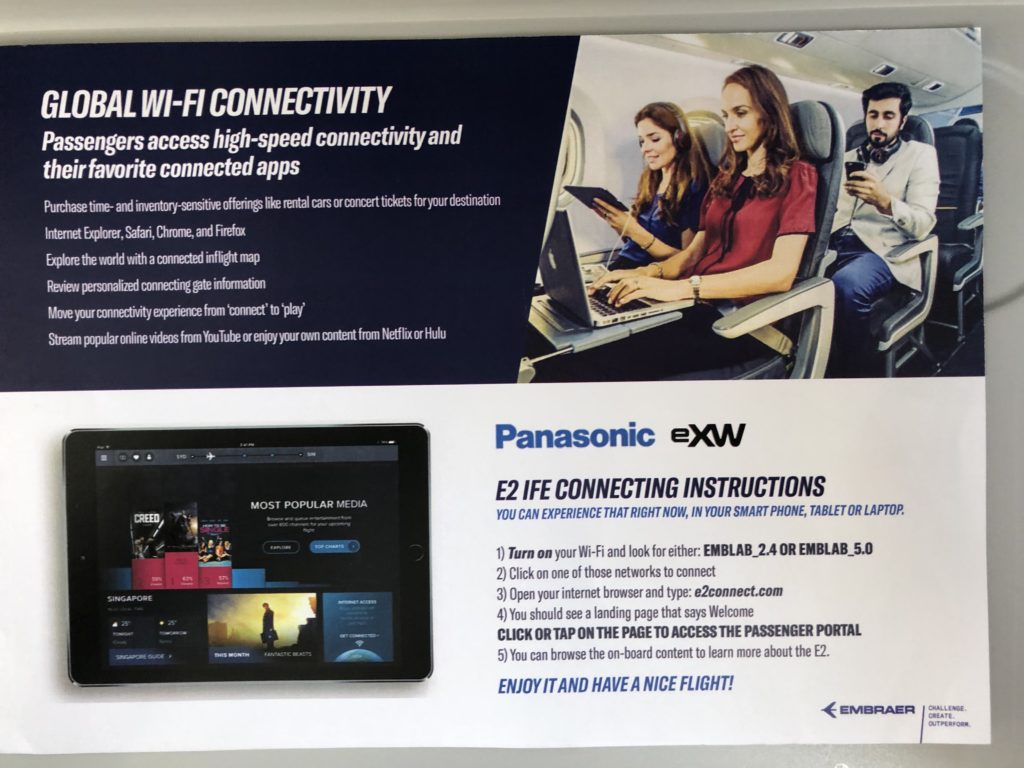
Given I was not working on my laptop on this flight, after a while, I started to look out of the window for some gorgeous views.
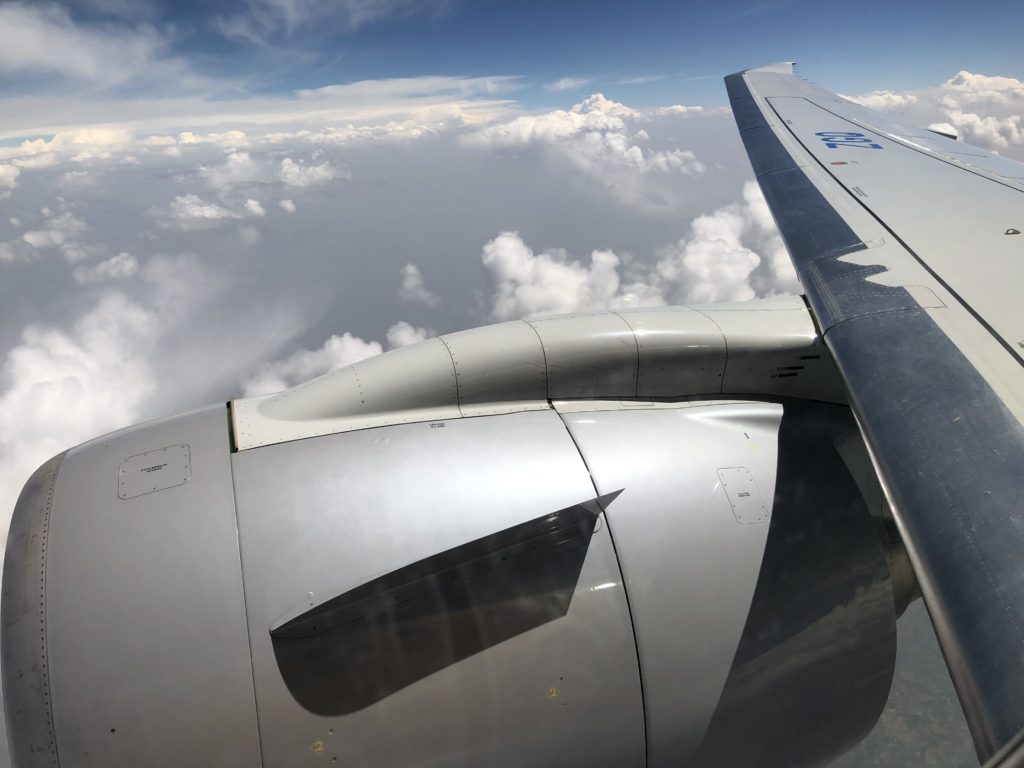
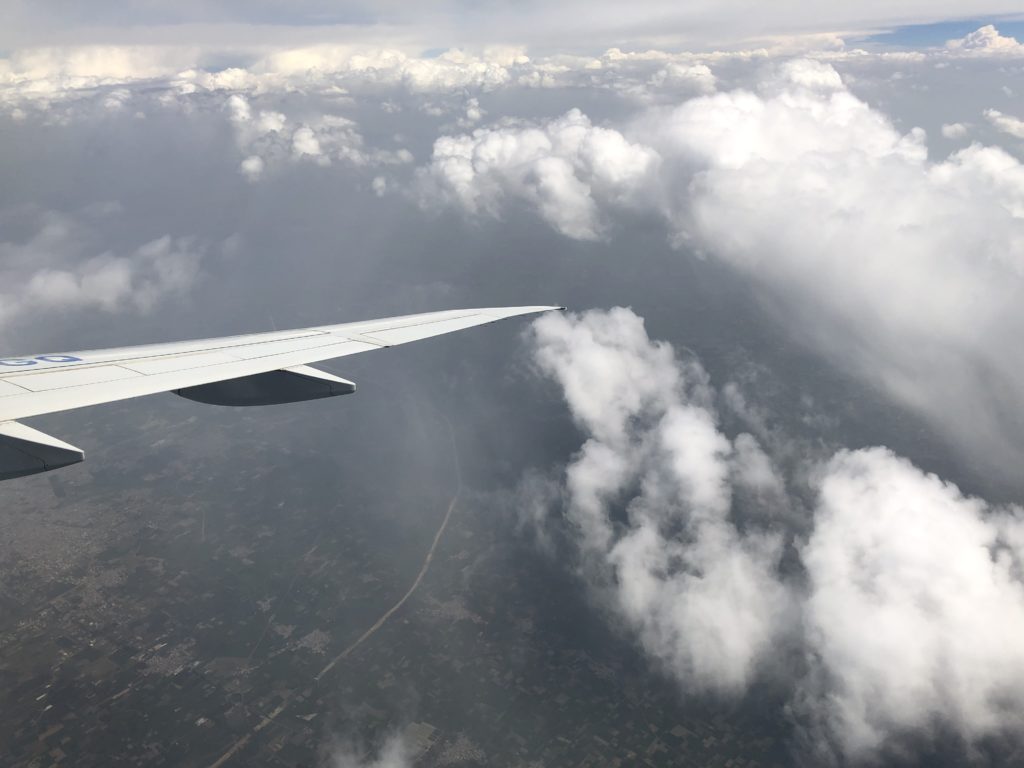
The service crew brought out the drinks cart for quick service of some Brazilian nuts, and a Brazilian soft drink on this flight.
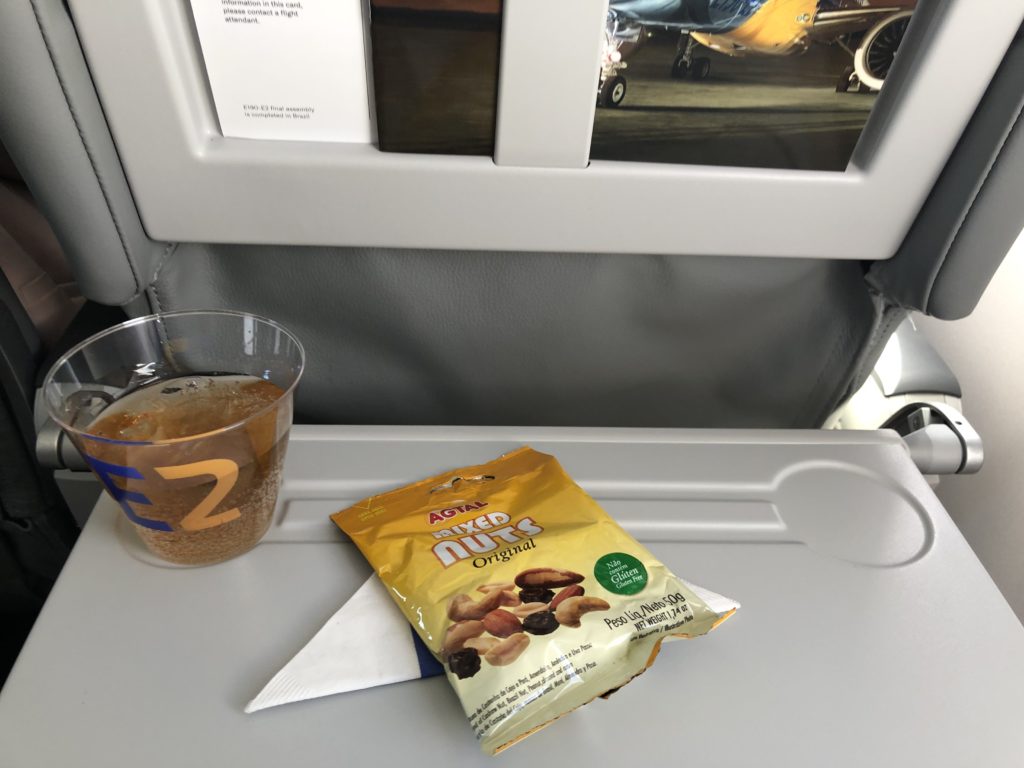
You would notice the ridges on the seat back tray, and those are for holding your phone or your tablet when you consume content on it.
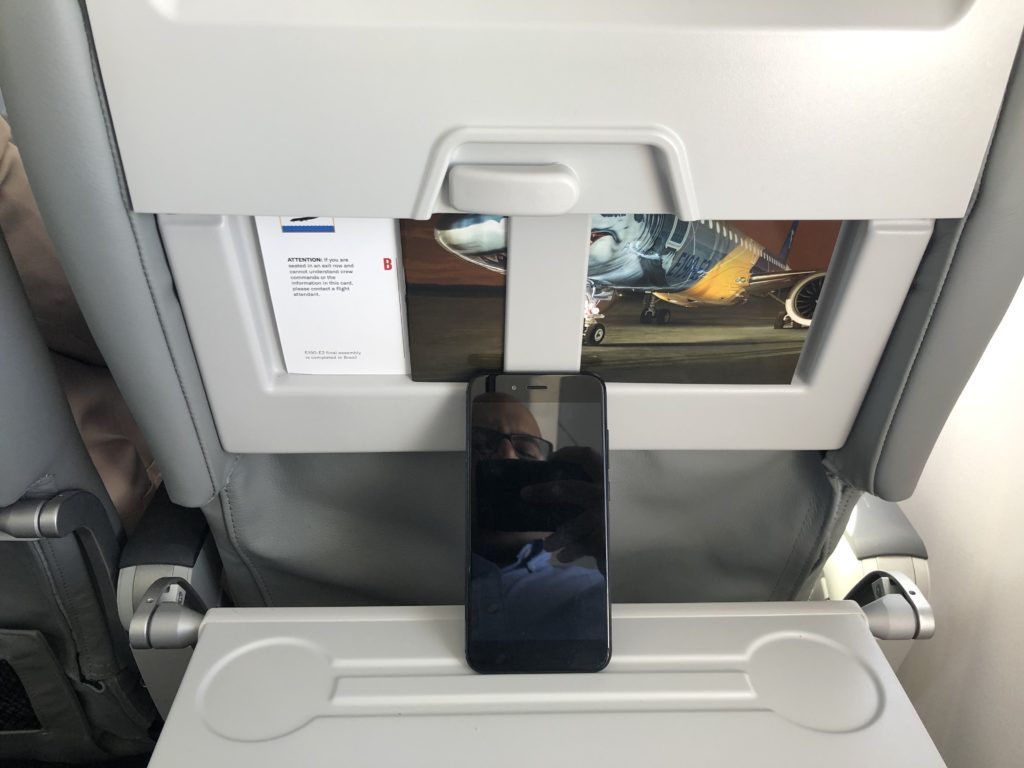
There was also another unique feature on this aircraft with no middle seats. You did not have to share your call button with your neighbour as well. This way, even the crew knows which passenger has called for them, rather than just the row.
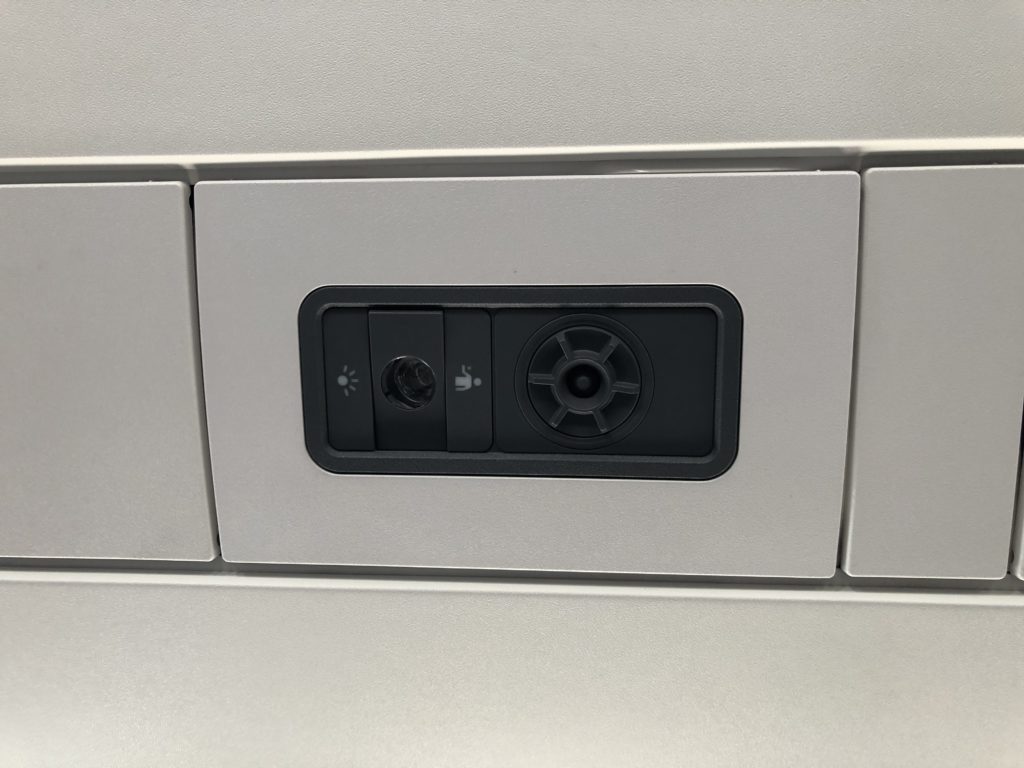
Eventually, we got back to Delhi after a smooth ride on this aircraft for about 1.15 hours.
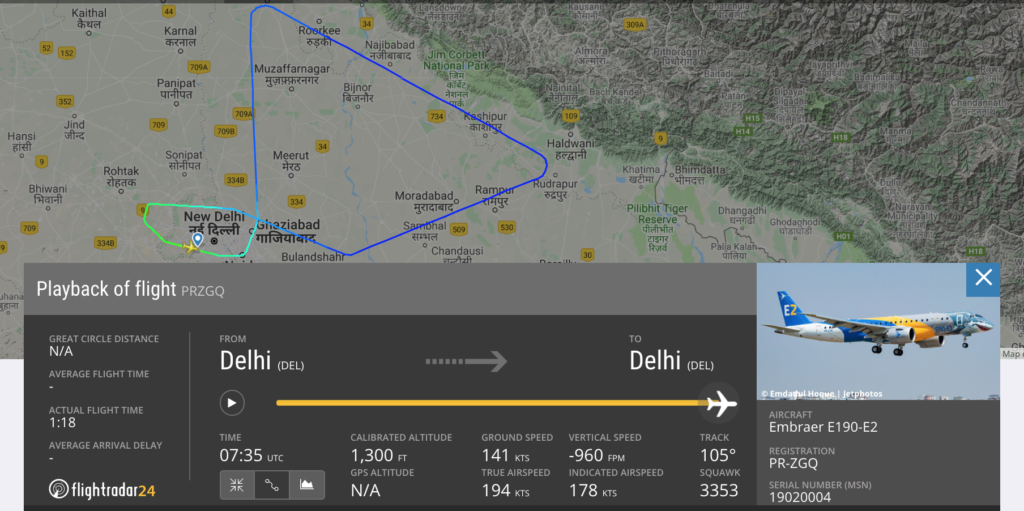
I thoroughly enjoyed my ride on the Embraer E2, and I do hope that some of the airlines interested in doing regional operations in India would look at them for their fleet. I love the fact that even in Economy, the aircraft was not cramped and I would compare the experience and the finishing coming from the airline to some premium economy products out there.
And before I am out of here, here is a customary picture from the cockpit. The aircraft has the famed Embraer Yoke but is largely fly by wire. And those 4 screens give the pilot all the information they need in a very organised fashion.

What are your thoughts about the Embraer E2? Which airline do you think would be able to make the best use of an aircraft like this in their fleet.


Paramount airways used to operate Embraer. Your article brought back memories of travelling on Paramount on the COK-DEL route (2006 timeframe) and those flights were really classy and comfortable.
Ajay,
I think your MacBook Pro is 13″, just exactly the same as mine.
@Vincent, ah, you are right. I carried the 13″ one that day, not the 15″